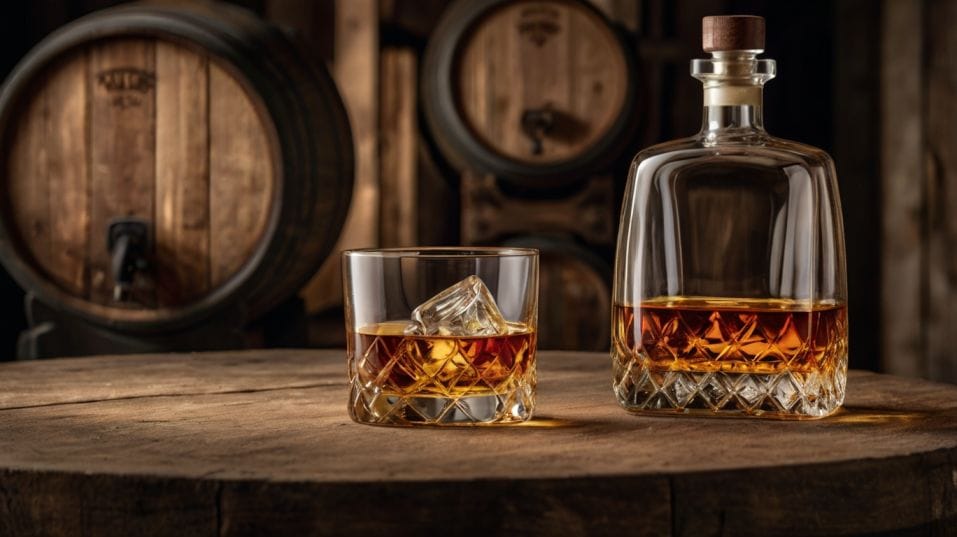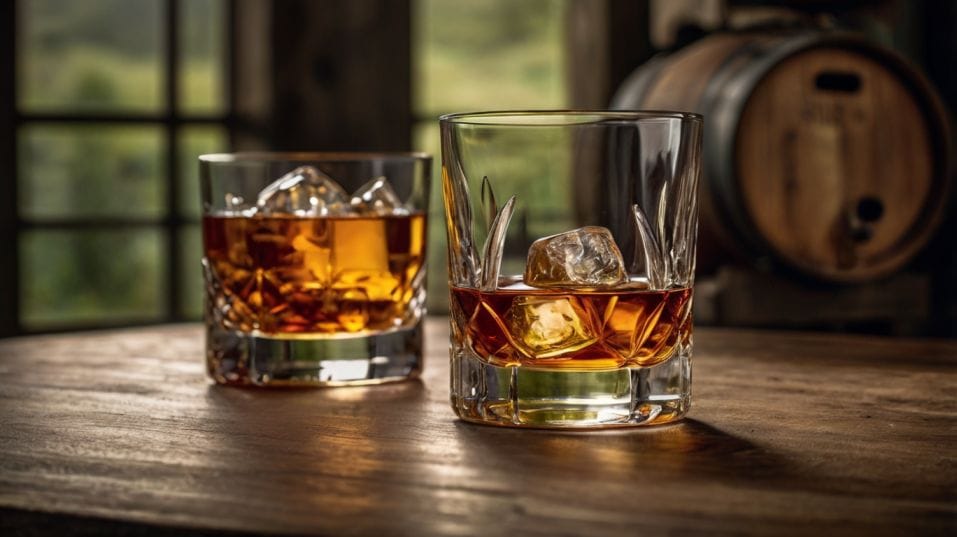Regional Flavor Clues: What Scotch Tastes Like vs. Bourbon
Discover how Scotch and bourbon reveal their regional roots. Learn to taste with purpose, spot flavor clues, and buy with real confidence.

What if you could taste the place a whiskey comes from? Not just the barrel or the grain, but the climate, the culture, even the philosophy behind it.
For anyone early in their whiskey journey, there’s no faster way to level up than learning how region shapes flavor.
Especially when comparing Scotch to bourbon, the differences are bold, clear, and incredibly revealing—if you know what to look for. This guide helps you taste with confidence, not guesswork.
Scotch: Cold-Climate Discipline and Layered Subtlety
Scotch isn’t built for immediacy. It’s shaped by the long, slow patience of a cool, damp climate.
Most of it is distilled from malted barley, often dried with peat smoke, and aged for years—sometimes decades—in used oak barrels that won’t dominate the spirit.
That restraint defines the Scotch experience: more clarity, less sweetness, more room for the core grain and environmental notes to shine.
But don’t confuse subtle for simple. Scotch carries its complexity differently than bourbon. The flavor tends to stretch out across time and texture—lighter on the tongue, drier on the finish, sharper in its edges.
Even without peat, malt-forward Scotch offers flavors you don’t find in American whiskey: barley sugar, hay, lemon peel, green apple, honeysuckle, mineral water. Some regions dial it up.

Speyside, Highland, Islay—and Beyond
Speyside Scotch is elegant and fruit-forward—ripe pear, fresh vanilla, malt biscuits. Highland drams often carry more structure: honey, heather, a bit of spice.
Islay is where peat takes the lead—think smoked fish, iodine, sea spray, and burnt herbs. It’s not just smoky; it’s medicinal, marine, alive with wild intensity.
Lowland whiskies are lighter, grassy, even floral. Campbeltown gives you funk—salty, oily, rich.
The oak here matters too—but it’s never new. Scotch is usually aged in ex-bourbon or ex-sherry barrels, meaning the wood adds character without drowning the spirit in tannin or sugar.
You might pick up dried fruit, toasted nuts, or dark chocolate from the sherry cask. But it’s always integrated, never dominant. Scotch asks you to lean in, to wait for the layers to reveal themselves.
Bourbon: American Grain, New Oak, and Big Flavor Moves
If Scotch is a slow-burning novel, bourbon is a punchy rock anthem—loud, immediate, and unapologetically bold.
Legally, it must be made in the U.S. from at least 51% corn and aged in new, charred oak barrels. Those rules alone tilt bourbon in a different direction. Corn brings body and sweetness.
New oak brings caramelized sugars, baking spices, and toasted wood. The result? A whiskey that’s rich, warm, and deeply expressive—even at a young age.
Where Scotch often explores the mineral or saline edge of flavor, bourbon doubles down on dessert-like richness.
Expect vanilla bean, brown sugar, toasted marshmallow, nutmeg, cinnamon, cocoa. Even the fruit notes lean jammy—dark cherry, fig, stewed apple. The structure is heavier. The finish is thick. The flavor rises fast and lingers long.
Mash Bills and Barrel Breath
But bourbon isn’t a monolith. What’s in the mash bill beyond corn changes everything. High-rye bourbons carry spice, heat, and bite—black pepper, clove, mint.
Wheated bourbons go soft and sweet—think honey rolls, toffee, custard. High-corn bourbons can be full-on candy—popcorn, cola, corn syrup. You can taste the grain choices as clearly as the barrel.
Climate is a factor too. Bourbon’s made in places like Kentucky and Tennessee, where summers get hot and aging barrels breathe deeply.
The whiskey expands into the oak and pulls flavor faster than it would in the Scottish Highlands. That’s why a 6-year bourbon can feel as developed as a 12-year Scotch.
Technique Is Taste: How Process Shapes Flavor
Forget the labels for a second. What you’re really tasting is a collection of choices. Grain bill, barrel type, yeast strain, still shape, cut points, aging environment—each one shapes the outcome.
Learn those levers, and you stop tasting passively. You start identifying. Here’s how to sharpen your instincts:
- Grain first: Is it corn-sweet, malt-rich, or rye-spicy? That sets your baseline.
- Oak next: Is the barrel fresh and loud (vanilla, char, coconut), or used and mellow (dried fruit, almond, oxidation)?
- Finish dry or sweet? Bourbon typically ends round and sweet; Scotch often dries out, especially peated versions.
- Texture matters: Does it coat like syrup or fade like smoke? That tells you a lot about both barrel and base spirit.
- Layer vs. blast: Is the flavor unfolding gradually (Scotch), or hitting you upfront (bourbon)?
When you taste with this mindset, you build more than just flavor memory. You build perspective. You can evaluate whiskey by its intent and execution, not its price tag or bottle design.
Culture in the Glass
Scotch and bourbon reflect not just geography, but philosophy.
Scotch is about legacy, preservation, and refinement. It’s made in centuries-old distilleries, aged in stone warehouses, and defined by subtle shifts in climate and time.
The culture prizes continuity and terroir. You feel that in the glass—it’s deliberate, complex, and contemplative.
Bourbon is built on boldness and innovation. It’s a product of frontier spirit, immigrant ingenuity, and a uniquely American obsession with flavor.
The culture is proud, loud, and unpretentious. The best bourbons are as much about craft as they are about charisma.
You don’t have to choose sides. But knowing what each culture values helps you appreciate what’s in the bottle. It gives you context—and that context becomes part of your enjoyment.
Final Thoughts: Make It Practical
There’s no shortcut to developing real whiskey insight. But learning to taste place is one of the fastest, sharpest upgrades you can make. It’s how you separate gimmick from greatness, trend from tradition.
So don’t just read this—practice. Pour a classic Highland Scotch next to a bold Kentucky bourbon. Taste them with intent.
Write down what you notice. Don’t reach for metaphors—focus on texture, structure, contrast. Then try something peated. Something wheated. Something cask-strength. Keep collecting flavor data. Build your own mental flavor map.
Your goal isn’t to know everything. It’s to build instincts. Because the more confidently you can taste regional clues, the smarter you’ll collect, the better you’ll buy, and the deeper your enjoyment gets. Pick a region. Pick a bottle. Start now.




